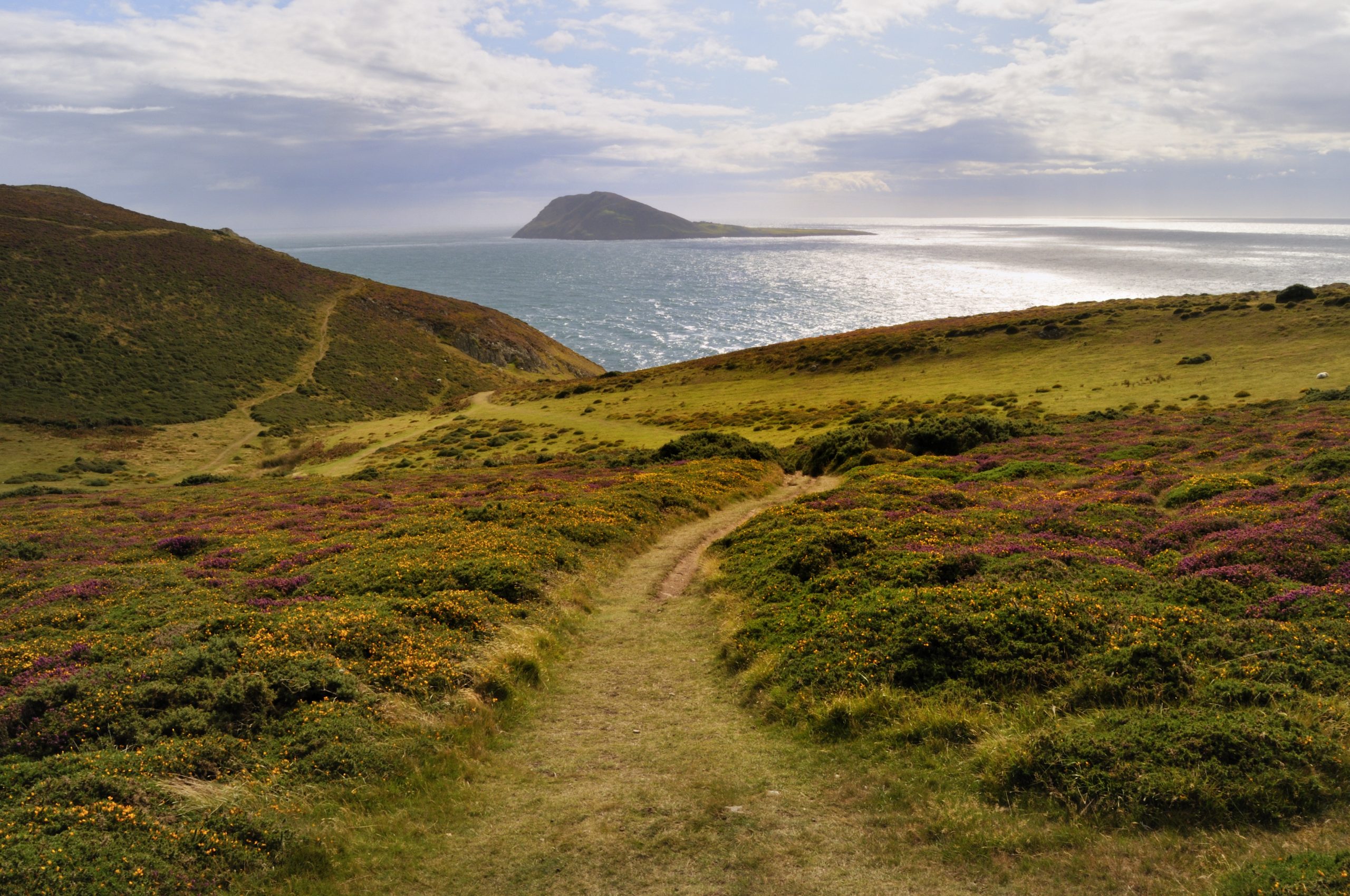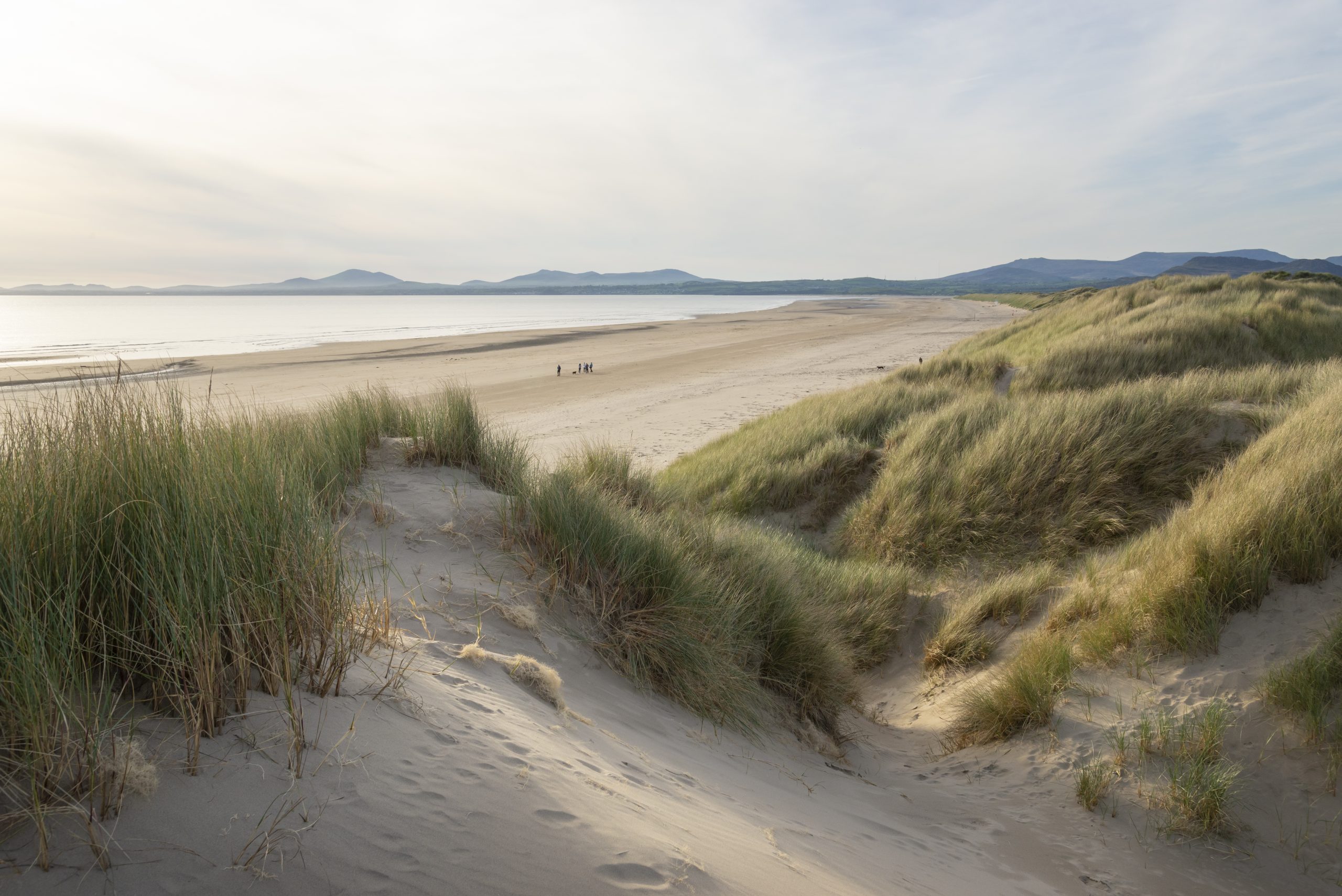Walking the Llŷn Peninsula: A trip to the ends of the earth
Fiona Reynolds ticks off another extreme point of Britain with a trip to the end of the Llŷn Peninsula in Wales.


There’s something fascinating about ‘ends’. Staying near Cape Wrath last year, I had a (sadly unfulfilled) desire to stand on the north-west tip of Scotland and both John O’Groats and Land’s End were early ticks on my life’s bucket list (although The Lizard is really a much nicer ‘end’ to Cornwall). I’ve visited Spurn Head on the Humber Estuary, North Foreland in Kent and St David’s Head in Pembrokeshire, but, in spite of repeated visits to North Wales, I have never been to the very end of the Llŷn Peninsula. Time to put that right.
I start at Porthor, full of happy memories from my time at the National Trust. A perfect white crescent of sand on the north coast of the Llŷn, the sand ‘whistles’ when you scuff your feet, hence the popular name ‘whistling sands’. This morning, the car park is filling fast, because the weather is gorgeous and people want to bag their pitch, but, instead of going down to the beach, Ruskin (my labrador) and I set off along the cliffs, buffeted by a lively breeze.

The path begins by skirting fields just above the crashing breakers and jagged coastline. The sea is aquamarine blue, the rocks black-flecked with lichens, the grass a fresh, vivid green. Ahead is the large lump of Mynydd Anelog, which looms larger as I approach. After dipping to cross a stream, I strike up through moorland to cross to the next valley just shy of the summit. Descending, I see the town of Aberdaron, my destination, to my east, although I will reach it the long way round. Further south is my next ‘summit’, Mynydd Mawr, which is the Llŷn’s end. To reach it, I cross two more streams before the path returns to hug the coastline. Then, up we go again, climbing to the top, where, suddenly, there’s a car park and viewpoint, for which the focal point is Bardsey Island, Ynys Enlli.
Bardsey is a place of mystery and legend. Its great humpback emerges straight from the sea, its long lowland tail drifts southerly. It’s a holy place, rich in Christian archaeology, and said to be the burial site for 20,000 saints, although that may reflect the claim that three pilgrimages to Bardsey were equal to one to Rome. It’s less than two miles from the coast, but retains a spirit of independence and elusiveness that is enviable in our crowded lands of today.
I walk past the remains of a lookout point, installed in the 1890s and upgraded during both World Wars to enhance coastal defences. Concrete platforms and two small huts are all that remain; today, the land is looked after by the National Trust.

Passing them, I turn the corner to walk east. The breeze is as strong, but the light utterly different. I pass the cliffs where St Mary’s Well (fresh water, right by the sea) can be found with a brave heart, at low tide, and take a long grassy path to Pen y Cil, where I turn north. Here, at last, we’re sheltered from the wind and the approach to Aberdaron is a delightful up-and-down bush-lined path. Every flower that can be out is blooming voraciously: red campion, bluebell, tormentil, ragged robin, vetches (purple and yellow), foxglove, Michaelmas daisies. In the hedgerows, the hawthorn is a frothy mass of white (surely the best in years?) and the gorse blazes gold.
The Wales Coastal Path is a triumph. Well waymarked and easy to follow, this stretch must be one of its highlights. Although I was almost alone from Porthor, from Mynydd Mawr the route was full of people loving the walk to the end of Wales on a beautiful day.
Exquisite houses, the beauty of Nature, and how to get the most from your life, straight to your inbox.
Fiona Reynolds is chair of the Royal Agricultural University governing council and author of ‘The Fight for Beauty’

The Llyn Peninsula AONB: Spectacular views, tragic tales and the rarest apple in the world
The Llyn Peninsla AONB entrances Kate Green.

Four summits, 12 miles, 5,000ft of climbing — and one unforgettable day in Snowdonia
Fiona Reynolds heads to Snowdonia for a day's walking. Twelve miles, four summits and 5,000ft of ascent later, the water’s
Fiona Reynolds is chair of the Food, Farming and Countryside Commission, the former director-general of the National Trust, former Master of Emmanuel College, Cambridge, and the author of The Fight for Beauty. Follow her on Twitter @fionacreynolds.
